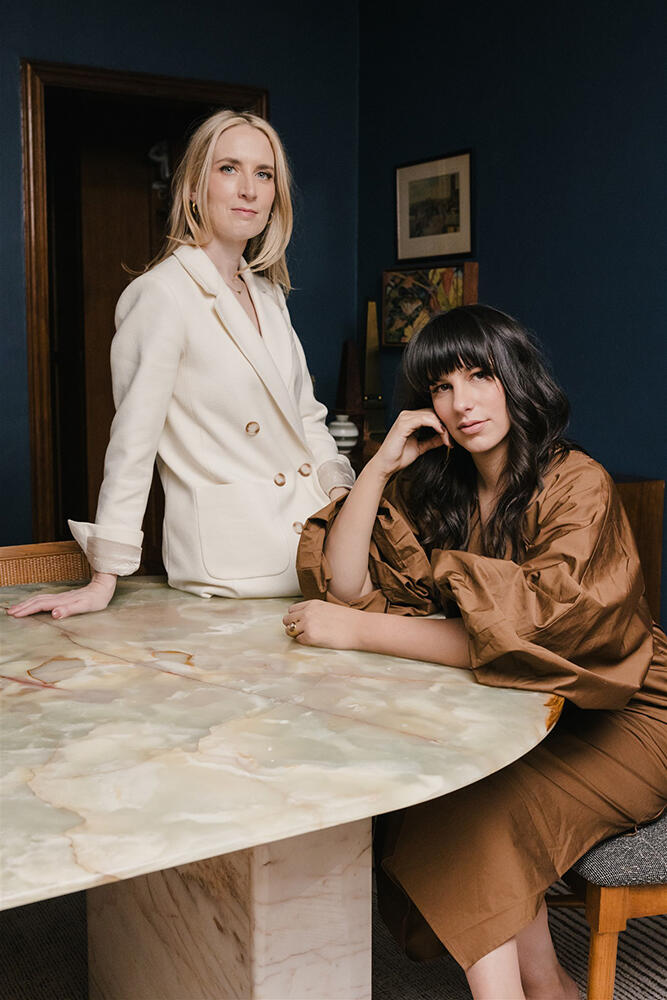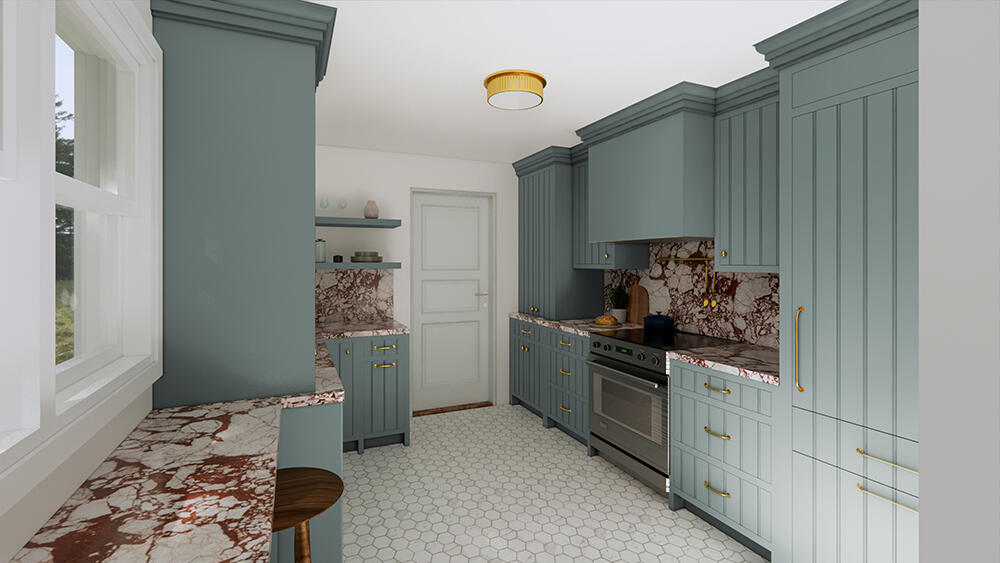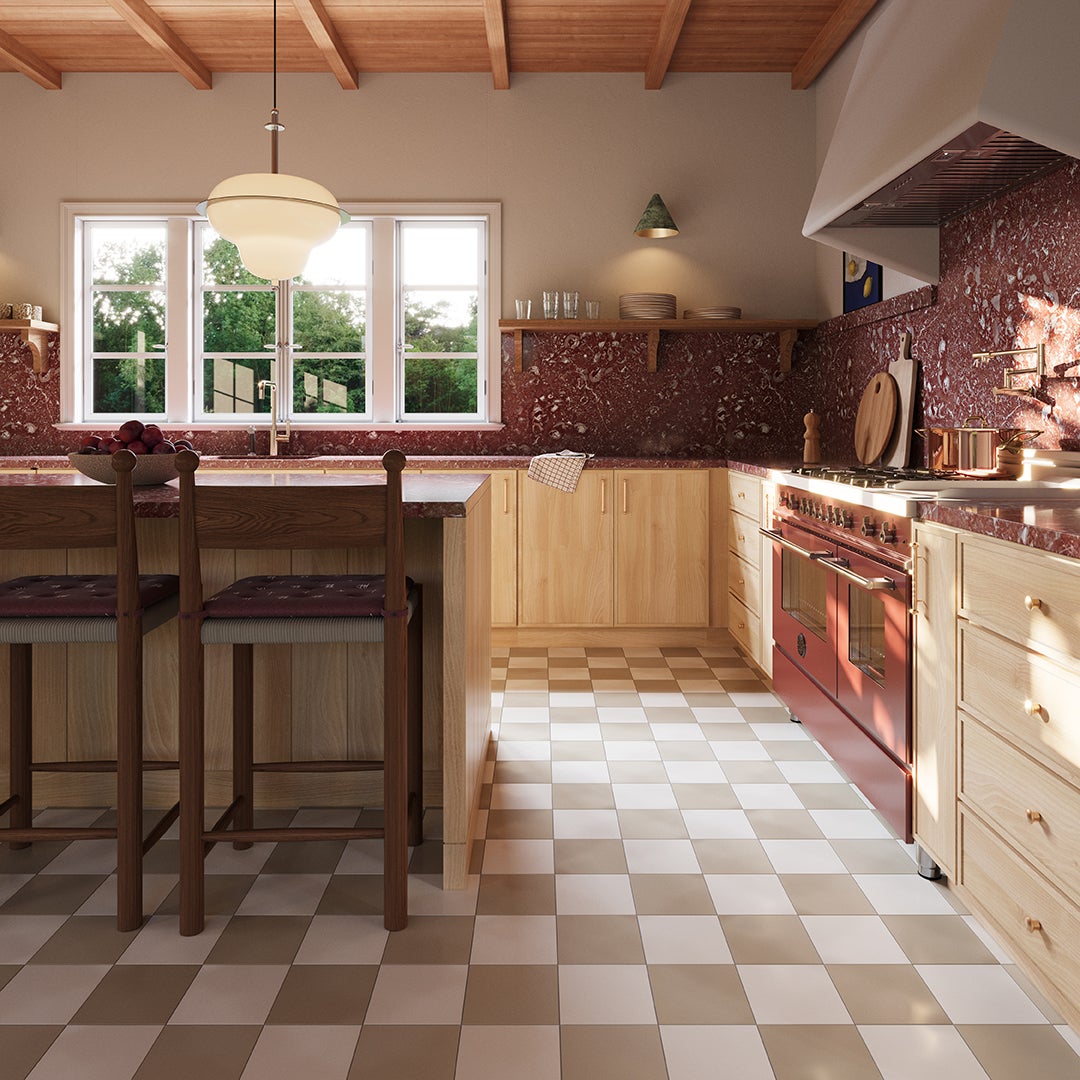There’s been a lot of speculation about how and to what extent the design industry, not always known for its warm embrace of the latest tech, will take to artificial intelligence. Enter Isla Porter, the recently launched kitchen startup that uses AI to create floor plans and cabinetry elevations down to one-sixteenth of an inch.
CEO Sharon Dranko, who co-founded the company with CCO Emily Arthur, estimates that kitchen designers spend up to 40 hours to complete all the specifications and measurements that go into a finished, actionable layout you can hand to a contractor. Using a lidar (light detection and ranging) scan of a customer’s kitchen in tandem with a detailed design questionnaire, she says Isla Porter’s technology can come up with three potential floor plans complete with precise, implementable measurements in about two hours.

It was not a desire to disrupt the cabinet industry using the latest tech that inspired the duo to leave their jobs at West Elm (where Dranko was a director of merchandising and Arthur was a vice president of design). They were motivated instead by the lack of aesthetics available when they were working on their own pandemic-era renovations. “Our question was, ‘Why is everything gray Shaker cabinets?’” says Dranko. “No shade—that’s what I have in my home, because that’s all that’s out there, short of custom millwork.”
The pair started exploring production options in 2021, and after partnering with a manufacturer in Cambodia, left their jobs to found Isla Porter 18 months ago (they raised funding from an investor from the cabinetry industry). Once they knew they could design the product they imagined, they ran into the next issue: how to get it into people’s homes. “It’s not like we designed a coffee table and you just ship it and you’re done,” says Arthur. “There are a lot of hands that go into [planning and] ordering a kitchen, from a designer to a contractor. We worked on all these beautiful designs, but how do we get it out there and improve upon this really complex process?” That question led them to Skipp, a Brooklyn-based AI startup they ultimately teamed up with to manage the back end of their platform.
The process works like this: After an initial consultation with a kitchen designer assigned to their project, customers complete a questionnaire about how the space is used, who lives in the house and what the storage needs are. They also provide inspiration images and preferences on details like overlay versus inset cabinetry, hood covers and more. Customers scan their space with an app that uses lidar technology, which comes on the Pro editions of iPhones and iPads, to capture exact measurements and details like bump-outs or other architectural eccentricities that might not accommodate standard cabinetry. At this point, the Isla Porter designer then presents the client with a mood board, including suggestions for finishes and a proposed floor plan, which is then adjusted before a final rendering is sent out. Clients can make two rounds of revisions before the final order is submitted.
For homeowners, the design process costs $3,000 and is credited toward the eventual cabinetry cost. For designers, the process is $1,500, though that cost doesn’t become a credit, as the assumption is that the design time will ultimately be billed back to the client. Finishing touches like countertops, backsplashes and lighting are not currently available through the site, though it’s an eventual goal to expand in those directions. Actually installing the cabinetry is up to the customer, but Isla Porter’s team will help connect customers with a contractor in their area if they’re not already working with someone.
While Isla Porter is targeting design-savvy homeowners, the brand is also hoping to court a trade audience. It launched with a 20 percent trade discount, and Dranko aims to cater to designers at any point in their career. “For early-career designers, we’re offering them the technical support of both the AI that’s doing a lot of that specification work, but then also collaborating with an experienced kitchen designer who’s double-checking everything on your behalf,” says Dranko. “For more experienced designers, this is a great option if you’ve taken a client outside your market. We ship nationally, and we help you find a local contractor wherever the project is based. We want to meet designers where they are and be of service to them.”

The Isla Porter product line features a selection of more than 20 door styles, 70 finishes, and details like brackets, reeded glass and cut-out accents. The cabinets are available in 58 Benjamin Moore or Sherwin-Williams paint colors, or can be custom-colored to any paint supplier. Contrasting tones or painted interiors are also possible. The cabinetry box is made of a construction-grade European plywood, and the frames and hang rails are made from American hardwood. From a cost perspective, Dranko puts Isla Porter below the price range for Henrybuilt and Plain English, and on par with deVOL. (I went through Isla Porter’s design process as part of the research for this article, and the total cost of cabinetry for my postage stamp of a kitchen was quoted as $38,290 for designers and $55,654 for homeowners.)
Arthur says that Isla Porter isn’t looking to have a singular aesthetic and hopes to attract an array of designers with its wide assortment of door styles. “We want designers to be able to work within our kit of parts and create lots of different visions,” she explains. “Coming from a product design background, it was critical to us to really provide a strong, wide breadth.”
Later in the year, Isla Porter will be debuting curated packages of FF&E targeting its homeowner clientele. The plan for these packages is to license and scale designer kitchen plans. “With a program like ours and the help of AI, we can partner with A-list designers and monetize their designs,” says Dranko. “Athena [Calderone] has spoken many times about how she wishes she’d found a way to monetize her [widely coveted and copied] kitchen design. We think this is a natural way to both work with the trade and acquire homeowner customers. So, whether you’re just starting out and you find kitchen design daunting or you’re a blockbuster designer, we think there are a lot of ways to work together.”





























